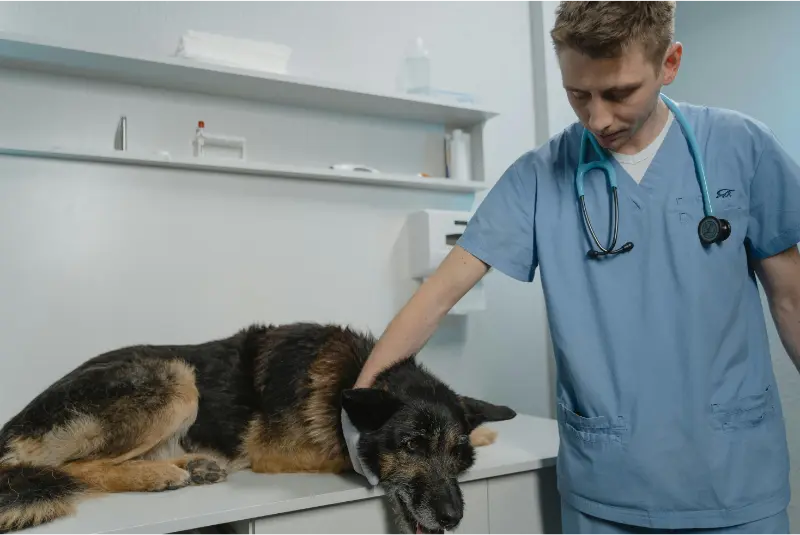→ Understanding Pet Insurance in Alabama
Pet ownership comes with a unique set of responsibilities, including the financial obligation to ensure your furry friends receive the best medical care possible. In Alabama, pet insurance is an increasingly popular option for managing veterinary costs. However, many pet owners are faced with the decision of whether to invest in insurance or to self-insure by setting aside funds for potential veterinary expenses. This blog post will explore the cost analysis of pet insurance versus self-insuring in Alabama, helping pet owners make an informed choice.
→ The Cost of Pet Insurance
Pet insurance costs can vary significantly based on several factors, including the pet’s breed, age, and the chosen coverage options. On average, dog insurance in Alabama costs approximately $51 per month, while cat insurance averages around $27 per month for a policy with $5,000 of annual coverage, a $250 deductible, and an 80% reimbursement level[5]. For those opting for unlimited annual coverage, the average monthly premium rises to $76 for dogs and $37 for cats[5].
Moreover, pet insurance companies often provide customizable plans, allowing pet owners to select their deductible, reimbursement percentage, and annual coverage limits. This flexibility can help tailor the policy to fit individual budgets and needs. However, it is essential to note that premiums have been on the rise, with a reported increase of 21% in the past year alone, primarily due to escalating veterinary costs[4].
→ The Financial Implications of Self-Insuring
Self-insuring involves setting aside a certain amount of money each month to cover potential veterinary expenses. This approach can be appealing, especially for pet owners who prefer not to pay monthly premiums for insurance. For instance, if a pet owner saves $27.25 per month, they would accumulate about $327 in a year, which could cover minor veterinary visits or treatments[4].
However, the risk of self-insuring lies in the unpredictability of veterinary costs. Major medical emergencies, such as surgeries or chronic illness treatments, can quickly escalate into thousands of dollars. For example, spinal surgery can cost between $8,000 and $10,000, far exceeding what most pet owners could save in a year[4]. Therefore, while self-insuring may seem cost-effective for minor issues, it poses a significant risk if a pet experiences a severe health crisis.
→ Evaluating the Benefits of Pet Insurance
Pet insurance offers several advantages that can outweigh the costs for many pet owners. One of the primary benefits is the peace of mind it provides. Knowing that a pet’s medical expenses will be covered in the event of an emergency allows owners to focus on their pet’s health rather than their financial situation. Additionally, pet insurance can facilitate access to higher-quality veterinary care, as pet owners are less likely to hesitate when it comes to necessary treatments.
Furthermore, pet insurance typically covers a wide range of services, including accidents, illnesses, and even routine care, depending on the policy. This comprehensive coverage can be invaluable, especially considering that one in three pets will require emergency treatment each year[2].
→ The Drawbacks of Pet Insurance
Despite its benefits, pet insurance is not without its drawbacks. Many policies come with limitations and exclusions, such as caps on payouts for specific conditions and the requirement to pay a deductible before coverage kicks in. Additionally, premiums can increase as pets age, and many insurers do not cover pre-existing conditions, which can leave pet owners feeling trapped with rising costs and limited options[4].
Moreover, the complexity of pet insurance policies can be daunting. Pet owners must carefully read the fine print to understand what is covered and what is not, which can lead to confusion and frustration when it comes time to file a claim.
→ Conclusion
When deciding between pet insurance and self-insuring in Alabama, pet owners must weigh the potential costs and benefits of each option. Pet insurance can provide essential financial protection against unexpected veterinary expenses, offering peace of mind and access to quality care. However, the rising costs of premiums and the complexity of policies can be significant drawbacks.
On the other hand, self-insuring can save money in the short term but poses the risk of being unprepared for major medical expenses. Ultimately, the choice between pet insurance and self-insuring will depend on individual circumstances, including financial stability, risk tolerance, and the specific needs of each pet. By carefully considering these factors, pet owners can make an informed decision that best suits their situation and ensures their beloved companions receive the care they deserve.
Citations:
[1] https://www.forbes.com/advisor/pet-insurance/is-pet-insurance-worth-it/
[2] https://www.pawlicy.com/blog/is-pet-insurance-worth-it/
[3] https://www.marketwatch.com/guides/pet-insurance/pet-insurance-cost/
[4] https://moneyweek.com/personal-finance/insurance/604729/should-you-buy-pet-insurance-or-self-insure-your-pet
[5] https://www.forbes.com/advisor/pet-insurance/pet-insurance-cost/
[6] https://money.com/does-pet-insurance-pay/
[7] https://www.insurance.alabama.gov/PDF/Consumers/Current%20Insurance%20Market%20BMA10T6.pdf
[8] https://www.acceptanceinsurance.com/blog/buying-pet-insurance-reasons/
